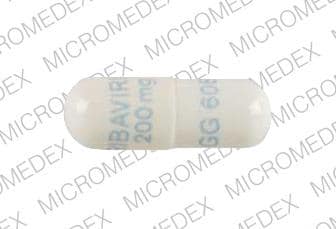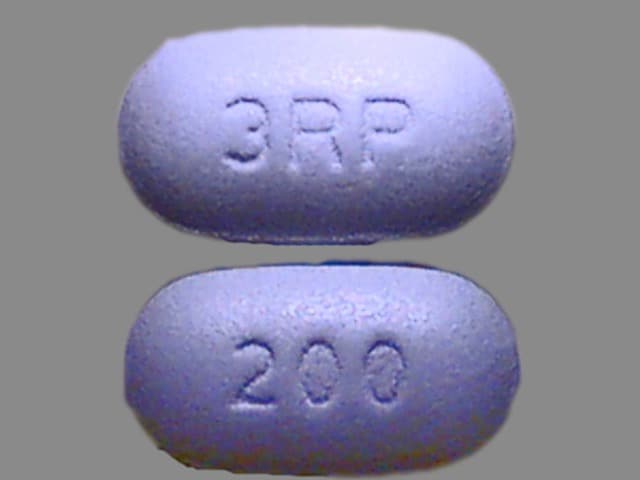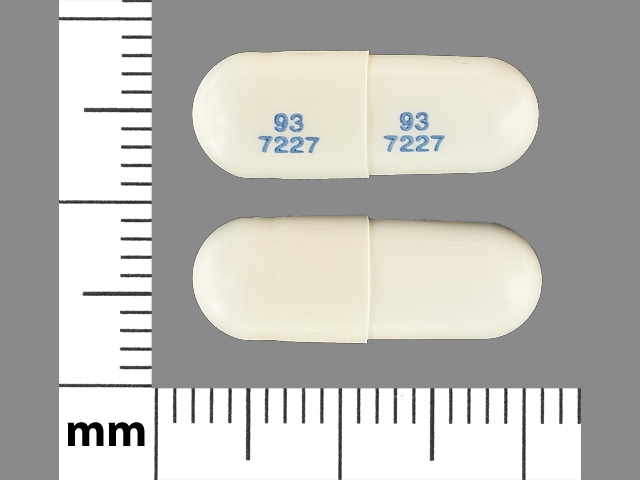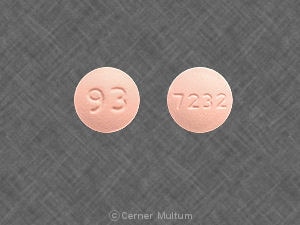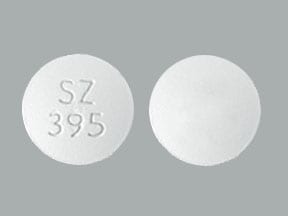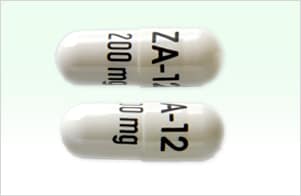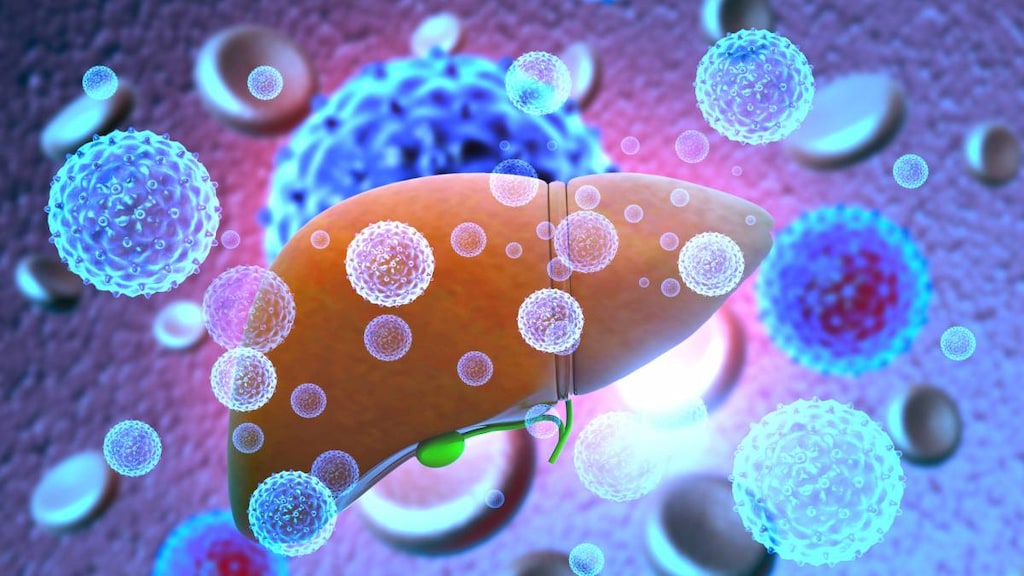Boxed Warning
Appropriate use:
Use of ribavirin in patients requiring mechanical ventilator assistance should be undertaken only by health care providers and support staff familiar with this mode of administration and the specific ventilator being used. Strict attention must be paid to procedures that have been shown to minimize the accumulation of drug precipitate, which can result in mechanical ventilator dysfunction and associated increases in pulmonary pressures.
Sudden deterioration of respiratory function has been associated with the initiation of ribavirin use in infants. Carefully monitor respiratory function during treatment. If the initiation of ribavirin treatment appears to produce sudden deterioration of respiratory function, stop treatment and reinstitute only with extreme caution, continuous monitoring, and consideration of coadministration of bronchodilators.
Aerosolized ribavirin is not indicated for use in adults. Be aware that ribavirin has been shown to produce testicular lesions in rodents and to be teratogenic in all animal species in which adequate studies have been conducted (rodents and rabbits).
Dosage Forms
Excipient information presented when available (limited, particularly for generics); consult specific product labeling.
Solution Reconstituted, Inhalation:
Generic: 6 g (1 ea)
Solution Reconstituted, Inhalation [preservative free]:
Virazole: 6 g (1 ea)
Pharmacology
Mechanism of Action
Inhibits replication of RNA and DNA viruses; inhibits influenza virus RNA polymerase activity and inhibits the initiation and elongation of RNA fragments resulting in inhibition of viral protein synthesis
Pharmacokinetics/Pharmacodynamics
Absorption
Inhalation: Systemic; dependent upon respiratory factors and method of drug delivery; maximal absorption occurs with the use of aerosol generator via endotracheal tube; highest concentrations in respiratory tract and erythrocytes
Metabolism
Occurs intracellularly and may be necessary for drug action; metabolized hepatically to deribosylated ribavirin (active metabolite)
Excretion
Inhalation: Urine (40% as unchanged drug and metabolites)
Time to Peak
Serum: Inhalation: At end of inhalation period
Half-Life Elimination
Respiratory tract secretions: Infants and Children 6 weeks to 7 years: ~2 hours (Englund 1990)
Plasma: Infants and Children: Inhalation: 9.5 hours
Use: Labeled Indications
Respiratory syncytial virus: Treatment of hospitalized infants and young children with respiratory syncytial virus (RSV) infections with efficacy possibly increased in early course therapy; treatment of severe lower respiratory tract RSV infections in patients with an underlying compromising condition (prematurity, cardiopulmonary disease, or immunosuppression)
Use: Off Label
Respiratory syncytial virus infection in hematopoietic cell or heart/lung transplant recipientsc
Data from multiple retrospective studies suggest that early use of ribavirin oral inhalation (at the URI stage) may be beneficial for the treatment of respiratory syncytial virus (RSV) in adult hematopoietic cell transplant (HCT) recipients and was shown to decrease progression to pneumonia and mortality Chemaly 2006, Shah 2013. Data from two small prospective trials suggest early use of combination therapy with ribavirin oral inhalation and IV immune globulin may be associated with improved survival and a decrease progression to pneumonia in high-risk HCT recipients with RSV infection Ghosh 2000, Whimbey 1995.
Data from a single-center retrospective cohort study suggest that use of oral inhalation ribavirin and oral ribavirin had similar outcomes (eg, decreased progression to pneumonia, decreased morbidity and mortality) when used to treat HCT recipients with RSV infection and recommend oral ribavirin as a safe, effective, and well tolerated alternative with significant cost savings and decreased risk of caretaker teratogenetic exposure Foolad 2019, Trang 2018.
Data from a small retrospective trial suggest early use of oral inhalation ribavirin in combination with high-dose corticosteroids plus IV immune globulin and IV palivizumab in lung and heart-lung transplant patients with RSV infection may improve outcome, protect against pulmonary function decline, and help maintain allograft function Liu 2010. However, evidence is limited and routine use is not recommended; may consider use in lung transplant patients with severe pneumonia Ison 2019.
Contraindications
Hypersensitivity to ribavirin or any component of the formulation; women who are pregnant or may become pregnant
Dosage and Administration
Dosing: Adult
Respiratory syncytial virus infection in hematopoietic cell or heart/lung transplant recipients (off-label use): Note: May use in combination with intravenous immune globulin (IGIV), methylprednisolone, and palivizumab. Dosage and protocol may be institution-specific (Boeckh 2007; Chemaly 2006; Liu 2010; Shah 2013; Whimbey 1995). Pretreatment with albuterol may be necessary (Hynicka 2012).
Oral inhalation:
Mechanically-ventilated patients: Continuous dosing: 6 g over 12 to 18 hours daily (Chemlay 2006; Ghosh 2000; Hynicka 2012; Shah 2013; Whimbey 1995)
Nonmechanically-ventilated patients: Intermittent dosing: 2 g (over 2 to 4 hours) every 8 hours (Boeckh 2007; Hynicka 2012; Liu 2010) or 6 g (over 2 to 6 hours) every 6 to 8 hours via a small particle aerosol generator (SPAG-2) nebulizer (mask or hood) (Chemlay 2006; Ghosh 2000; Shah 2013; Trang 2018)
Dosing: Geriatric
Refer to adult dosing.
Dosing: Pediatric
RSV infection: Note: Due to potential toxic effects of exposed healthcare workers and variable efficacy results in trials, the AAP recommends against routine use of ribavirin to treat RSV; use should be reserved for patients with documented, potentially life-threatening disease (Red Book [AAP] 2015).
Infants and Children: Aerosol inhalation: Use with Viratek small particle aerosol generator (SPAG-2). Note: Dose actually delivered to the patient will depend on patient's minute ventilation.
Continuous aerosolization: 6 g administered over 12 to 18 hours/day for 3 to 7 days
Intermittent aerosolization: 2,000 mg over 2 hours 3 times daily in nonmechanically ventilated patients for 3 to 7 days has been used to permit easier accessibility for patient care and limit environmental exposure of health care worker. Due to apparent increased potential for crystallization of the high-dose 60 mg/mL solution around areas of turbulent flow such as bends in tubing or connector pieces, use of high-dose therapy in individuals with an endotracheal tube in place is not recommended (Englund 1994).
Reconstitution
Continuous aerosolization: Per the manufacturer, reconstitute 6 g vial with at least 75 mL of preservative free sterile water for injection or inhalation; shake vial well to mix. Transfer vial contents to the clean, sterile 500 mL SPAG-2 reservoir and further dilute to a final volume of 300 mL with preservative free sterile water for injection or inhalation; final concentration: 20 mg/mL. Alternatively, sterile NS has been used for dilution rather than sterile water to achieve a near isotonic solution (Meert 1994).
Intermittent aerosolization: Reconstitute 6 g vial with 100 mL of preservative free sterile water; final concentration: 60 mg/mL (Englund 1994).
Administration
Oral inhalation: Ribavirin should be administered in well-ventilated rooms (at least 6 air changes/hour). In mechanically ventilated patients, ribavirin can potentially be deposited in the ventilator delivery system depending on temperature, humidity, and electrostatic forces; this deposition and drug precipitation can lead to malfunction or obstruction of the expiratory valve, resulting in inadvertently high positive end-expiratory pressures. The use of one-way valves in the inspiratory lines, a breathing circuit filter in the expiratory line, and frequent monitoring and filter replacement have been effective in preventing these problems. Solutions in SPAG-2 unit should be discarded at least every 24 hours and when the liquid level is low before adding newly reconstituted solution. Should not be mixed with other aerosolized medications. Environmental services/infection control should be notified of ribavirin inhaled administration to any patient.
Storage
Store vials in a dry place at 15°C to 30°C (59°F to 86°F). Reconstituted solution is stable for 24 hours at room temperature.
Ribavirin (Oral Inhalation) Images
Drug Interactions
AzaTHIOprine: Ribavirin (Oral Inhalation) may increase serum concentrations of the active metabolite(s) of AzaTHIOprine. Specifically, concentrations of potentially myelotoxic methylated metabolites may be increased, while concentrations of active 6-thioguanine nucleotides may be decreased. Management: Consider using alternative agent(s) when possible. When these drugs are used in combination, monitor patients extra closely for signs/symptoms of myelosuppression. Consider therapy modification
Didanosine: Ribavirin (Oral Inhalation) may enhance the adverse/toxic effect of Didanosine. Ribavirin (Oral Inhalation) may increase serum concentrations of the active metabolite(s) of Didanosine. Avoid combination
Influenza Virus Vaccine (Live/Attenuated): Antiviral Agents (Influenza A and B) may diminish the therapeutic effect of Influenza Virus Vaccine (Live/Attenuated). Management: Avoid anti-influenza antivirals during the period beginning 48 hours prior to and ending 2 weeks after live influenza virus vaccine administration. Consider therapy modification
Interferons (Alfa): May enhance the adverse/toxic effect of Ribavirin (Oral Inhalation). Hemolytic anemia has been observed. Monitor therapy
Zidovudine: May enhance the adverse/toxic effect of Ribavirin (Oral Inhalation). Specifically, the risk/severity of anemia may be increased. Management: Due to significantly increased risk of anemia, consider even closer monitoring for anemia than routinely recommended. Alternative therapies should be considered when clinically possible, particularly for patients with other risk factors. Consider therapy modification
Adverse Reactions
Frequency not defined:
Cardiovascular: Bigeminy, bradycardia, chest pain, hypotension, tachycardia
Dermatologic: Skin rash
Ophthalmic: Conjunctivitis
Respiratory: Apnea, atelectasis, bacterial pneumonia, bronchospasm, cyanosis, dyspnea, hypoventilation, pneumothorax, pulmonary complications (ventilator dependence), pulmonary edema, severe dyspnea (worsening of respiratory status)
<1%, postmarketing, and/or case reports: Anemia, hemolytic anemia, reticulocytosis
Warnings/Precautions
Concerns related to adverse effects:
- Respiratory deterioration: [US Boxed Warning]: Sudden respiratory deterioration has been observed during the initiation of aerosolized ribavirin in infants; carefully monitor during treatment. If deterioration of respiratory function occurs, stop treatment; reinstitute with extreme caution, continuous monitoring, and consider concomitant administration of bronchodilators.
Special populations:
- Pregnancy: [US Boxed Warning]: Significant teratogenic and/or embryocidal effects have been observed in all animal species with adequate studies. Use is contraindicated in pregnant women. The manufacturer recommends that pregnant health care workers take precautions to limit exposure to ribavirin aerosol.
Dosage form specific issues:
- Inhalation: [US Boxed Warning]: Use with caution in patients requiring assisted ventilation because precipitation of the drug in the respiratory equipment may interfere with safe and effective patient ventilation; sudden deterioration of respiratory function has been observed; monitor carefully in patients with COPD and asthma for deterioration of respiratory function.
Monitoring Parameters
Respiratory function, hemoglobin, reticulocyte count, CBC with differential
Pregnancy
Pregnancy Considerations
Use is contraindicated in females who are or may become pregnant. [US Boxed Warning]: Aerosolized ribavirin is not indicated for use in adults. Be aware that ribavirin has been shown to produce testicular lesions in rodents and to be teratogenic in all animal species in which adequate studies have been conducted (rodents and rabbits). The manufacturer recommends that pregnant health care workers take precautions to limit exposure to ribavirin aerosol; potential occupational exposure may be greatest if administration is via oxygen tent or hood, and lower if administered via mechanical ventilation. The minimum interval following exposure to ribavirin inhalation prior to pregnancy is not known.
Patient Education
- Discuss specific use of vaccine and side effects with patient as it relates to treatment. (HCAHPS: During this hospital stay, were you given any medicine that you had not taken before? Before giving you any new medicine, how often did hospital staff tell you what the medicine was for? How often did hospital staff describe possible side effects in a way you could understand?)
- Have patient report immediately to prescriber signs of a severe pulmonary disorder (lung or breathing problems like difficulty breathing, shortness of breath, or a cough that is new or worse), fast heartbeat, slow heartbeat, severe dizziness, passing out, abnormal heartbeat, or severe loss of strength and energy (HCAHPS).
- Educate patient about signs of a significant reaction (eg, wheezing; chest tightness; fever; itching; bad cough; blue skin color; seizures; or swelling of face, lips, tongue, or throat). Note: This is not a comprehensive list of all side effects. Patient should consult prescriber for additional questions.
Intended Use and Disclaimer: Should not be printed and given to patients. This information is intended to serve as a concise initial reference for health care professionals to use when discussing medications with a patient. You must ultimately rely on your own discretion, experience, and judgment in diagnosing, treating, and advising patients.
